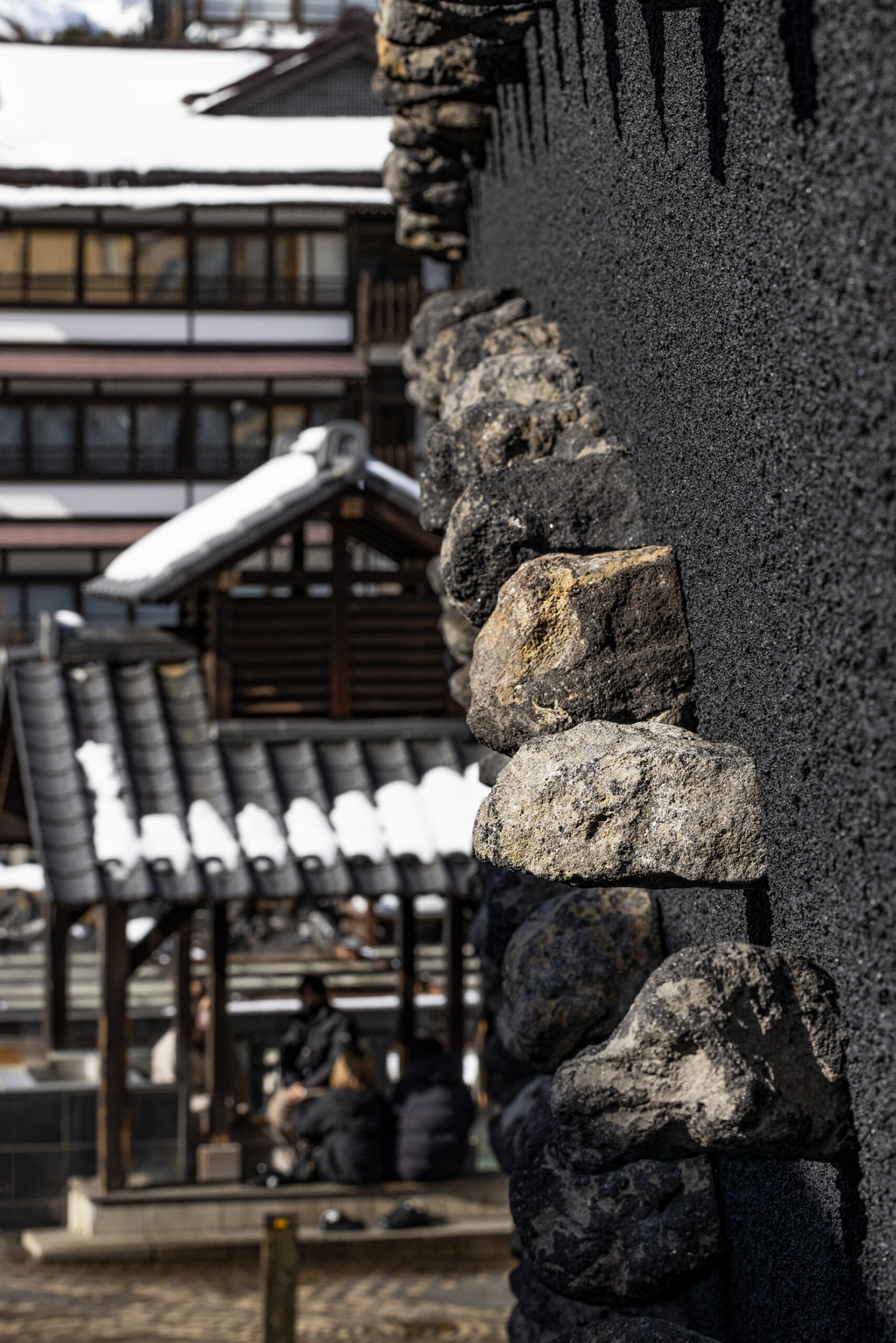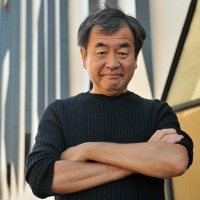Kengo Kuma was inspired by the environment with the intention of generating a direct connection between the building and the «Yubatake». It generated a protected space that is visually connected to the hot springs outside. To achieve this sensation in the small project, he included, on the black facade, Asama stones, which are found in hot springs, and arranged them on the facades following geometries that accompany the smooth and natural movement of steam.
The curved cutout at the bottom corner of the restaurant makes it a reference light in the smoky darkness at night. Inside, the finishes were made with “Asama” stone terrazzo and Japanese “washi” paper mixed with local crushed stones. The bedroom is a dark and cozy space with an exposed wooden deck. The adjoining bathroom, with hot springs, uses tiles that are normally used for the floor of the Yubatake.

Kusatsu Kimuraya by Kengo Kuma & Associates. Photograph by Kawasumi
Project description by Kengo Kuma & Associates
In the famous Kusatsu Onsen (hot spring) in Gunma Prefecture, we designed a one-room ryokan.
On the first floor, the restaurant directly faces the famous hot spring fields. By using Asama stone found in hot springs on the exterior walls, we connected the building and landscape into a three-dimensional landscape. To further harmonize with the landscape, curve geometries that resonate with the soft movement of steam rising from the hot springs govern how we arranged the use of local materials.
In the interior, local materials such as "Asama" stone terrazzo, and Japanese "washi" paper mixed with crushed local stones are present. The wet areas use tile materials that are typically used for the floor of the hot spring fields.
By incorporating material and geometrical elements of Yubatake hot springs throughout the building, we condensed the materiality of the historic town of Kusatsu into this small building.





































